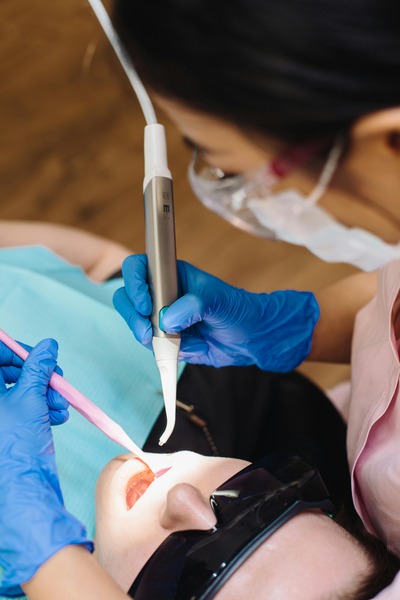The distress a child experiences from a toothache can be a significant concern for any family. Pain in a child’s mouth can indicate various issues, ranging from new teeth emerging to more severe problems like cavities or infections. It’s critical to take swift action to alleviate the pain and address the underlying cause.
Your initial response to your child experiencing a toothache should be to examine their mouth to see if there are obvious signs of trauma, swelling, redness, or dislodged teeth. Sometimes, food particles caught between teeth can cause discomfort, and gentle flossing can provide immediate relief.
Immediate Comfort Measures
The first line of action is to ensure your child is comfortable. Gently rinse their mouth with warm salt water, which helps reduce swelling and disinfect any wounds. If they can rinse their mouth safely, this simple step can bring immediate relief. You can also apply a cold compress to their cheek to help numb the area and reduce any swelling.
Take a look inside your child’s mouth and see if there are obvious signs of distress like redness, swelling, or lost fillings. Food particles trapped between teeth can sometimes cause pain, so flossing gently might be an immediate solution.
Analgesics and Pain Relief
You may consider over-the-counter pain relievers such as acetaminophen or ibuprofen, but be sure to use the correct dosage based on your child’s age and weight. These can help to temporarily manage the pain until you get to the dentist. Avoid applying aspirin directly to the gums, as this old-fashioned remedy can harm the gum tissue.
Dental Hygiene Practices
Encourage your child to keep up with their brushing and flossing routine. If the toothache is due to a minor infection or tooth decay, maintaining a clean mouth is paramount. Remind them to be gentle around the sensitive area to avoid further irritation.
Schedule a Dental Appointment
Quickly set up an appointment with your pediatric dentist. They can diagnose the cause of the toothache and provide proper treatment to alleviate the pain. Whether it’s a cavity, an infection, or a tooth eruption, the dentist will offer the right course of action.
Explore Treatment Options
During your visit, the dentist may suggest various treatments depending on the diagnosis. It’s a good time to explore the benefits of white fillings for children, as these are aesthetically pleasing and functionally effective, often used to address cavities without drawing attention to the dental work.
Soft Foods and Diet Adjustments
While you are waiting for the dentist appointment, provide your child with a diet of soft foods that require minimal chewing, such as: – Yogurt – Applesauce – Smoothies These foods can prevent additional strain on the aching tooth and ensure that your child maintains adequate nutrition.
Preventative Measures for the Future
Tormented by the toothache episode, preventive steps have become more pertinent than ever. Teach your child the importance of regular dental hygiene and schedule regular dental checkups as recommended by your pediatric dentist. It’s also a chance to enhance your child’s smile with cosmetic dentistry options if the aesthetic of their teeth has a lasting impact on their confidence following any dental treatments.
Understanding and Communication
Taking time to explain what’s happening to your child is crucial in calming their nerves. Use age-appropriate language to reassure them that toothache is a common issue and can be treated successfully.
Manage Anxiety and Fear
For many children, the prospect of a dental appointment can evoke feelings of anxiety or fear. It’s a common challenge, but with thoughtful preparation and support, parents can help their children navigate these emotions effectively. Creating a positive narrative around the dental experience can do wonders for a child’s comfort level. By demystifying the dentist in a comforting and understandable way, children can learn to see dental visits as a routine part of their health care.
-
Open Communication: Take the time to talk with your child about what they can expect during the dental visit in a simple and positive manner. Removing the unknown can greatly reduce anxiety and give them confidence about the experience.
-
Role Modeling: Children often mirror adult behaviors, so portraying dental visits as something normal and beneficial can be quite influential. It helps to discuss your own dental routines in an upbeat manner.
-
Comfort Items: Allowing a child to bring a familiar and comforting toy or book to the dentist can create a sense of security. This can help to distract them from their anxiety and make the visit feel more manageable.
Parents can help to alleviate dental anxiety by discussing the dentist’s role in keeping teeth healthy in simple, reassuring terms. Avoid sharing experiences that might increase fear and instead focus on the positive aspects, like the friendly staff or getting a sticker at the end of the visit. Introducing the concept of the dentist through children’s books or playful role-playing can also reinforce positive perceptions.
-
Positive Reinforcement: Using positive language when talking about the dental visit and emphasizing the benefits, such as a healthier smile, can help shift the child’s mindset from fear to curiosity and pride.
-
Educational Tools: There are many child-friendly resources available, such as books and videos, that introduce dental care in an entertaining and educational format. These can be used to prepare the child for what to expect.
-
Practice Visits: If possible, arrange a non-treatment visit to the dentist so the child can meet the dental team and familiarize themselves with the office environment in a relaxed setting.
On the day of the dental visit, bringing along a beloved toy, a comfort item, or a book can provide a familiar and comforting presence in a new environment. This can serve as a distraction and a source of comfort for the child before and during the examination. For some children, knowing their favorite toy is with them can make a significant difference in their level of anxiety.
Wrapping Up
No parent wants to see their child in pain, especially from something as treatable as a toothache. By tackling the toothache with essential care, consulting a dental professional, and employing preventive techniques, you are safeguarding your child’s oral health. When approached with calmness, compassion, and prompt action, a toothache can serve as a learning experience and an opportunity to reinforce healthy dental habits that last a lifetime.





